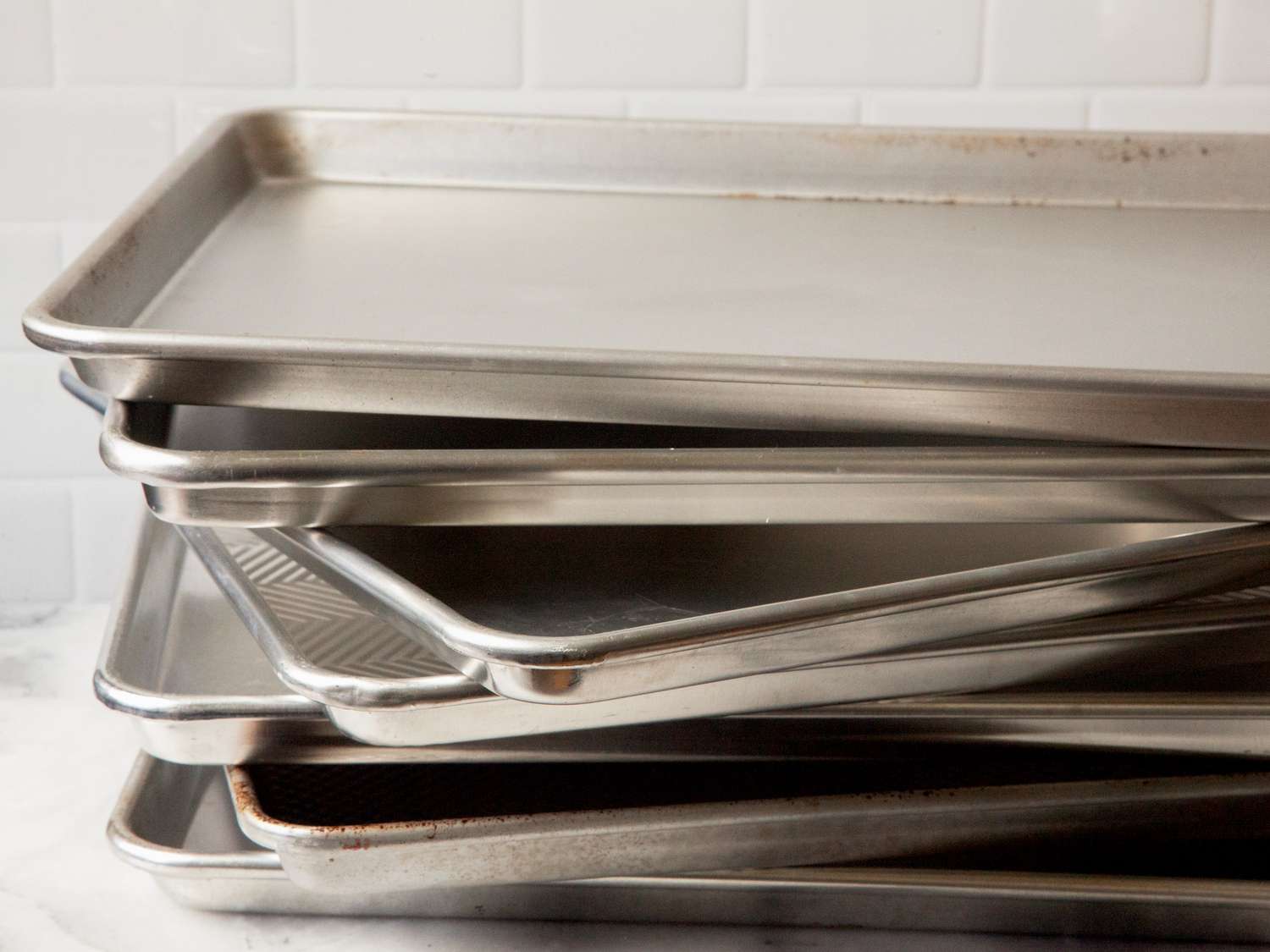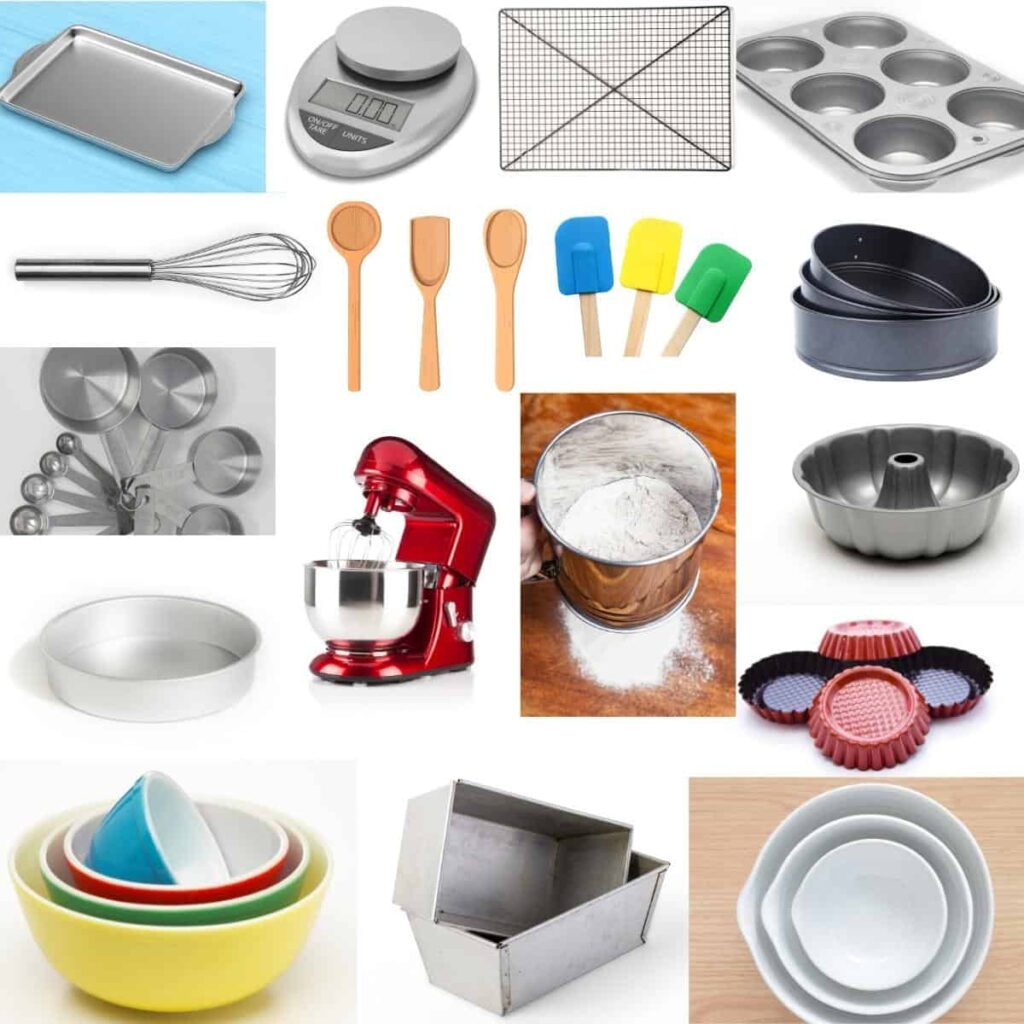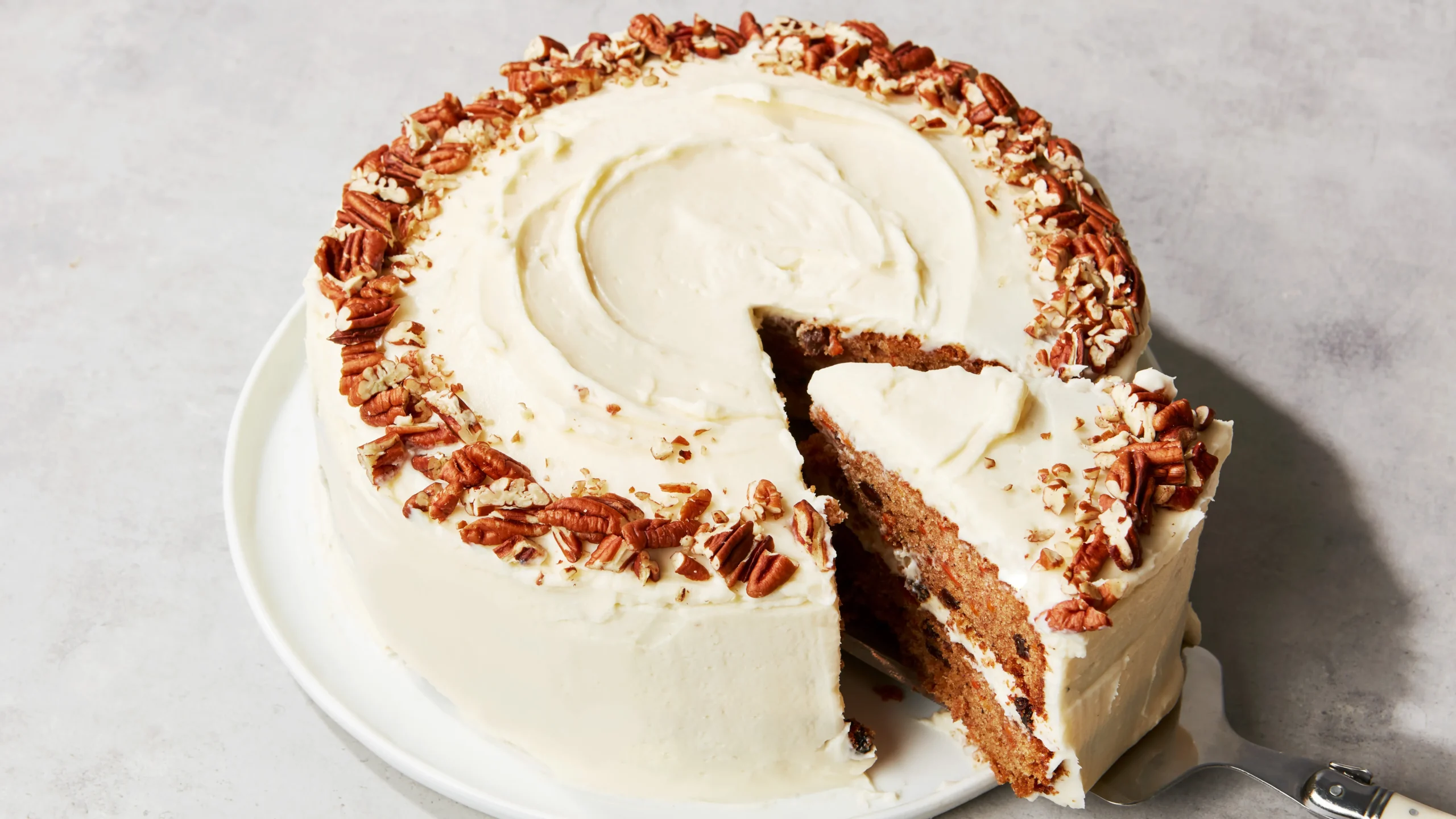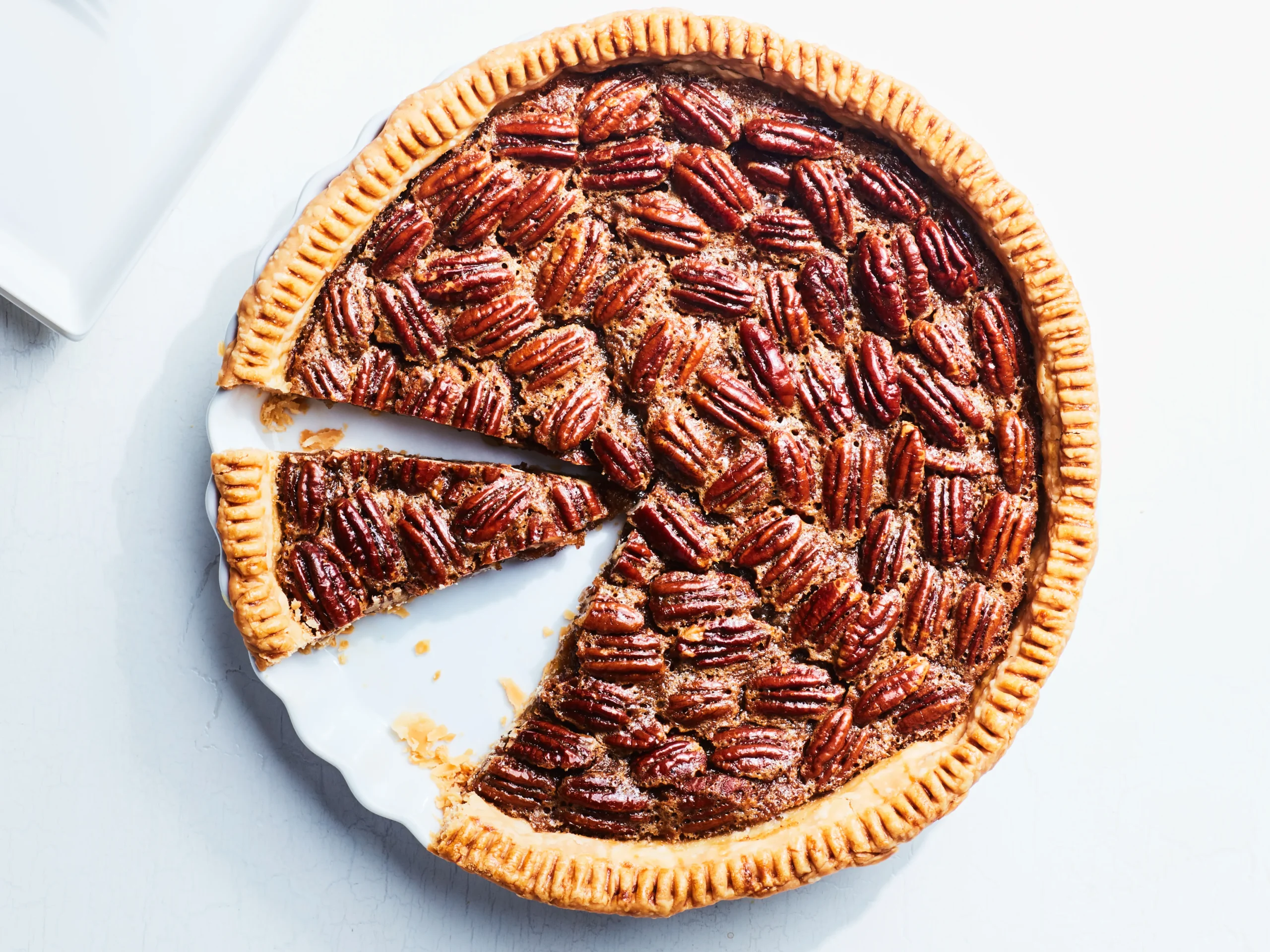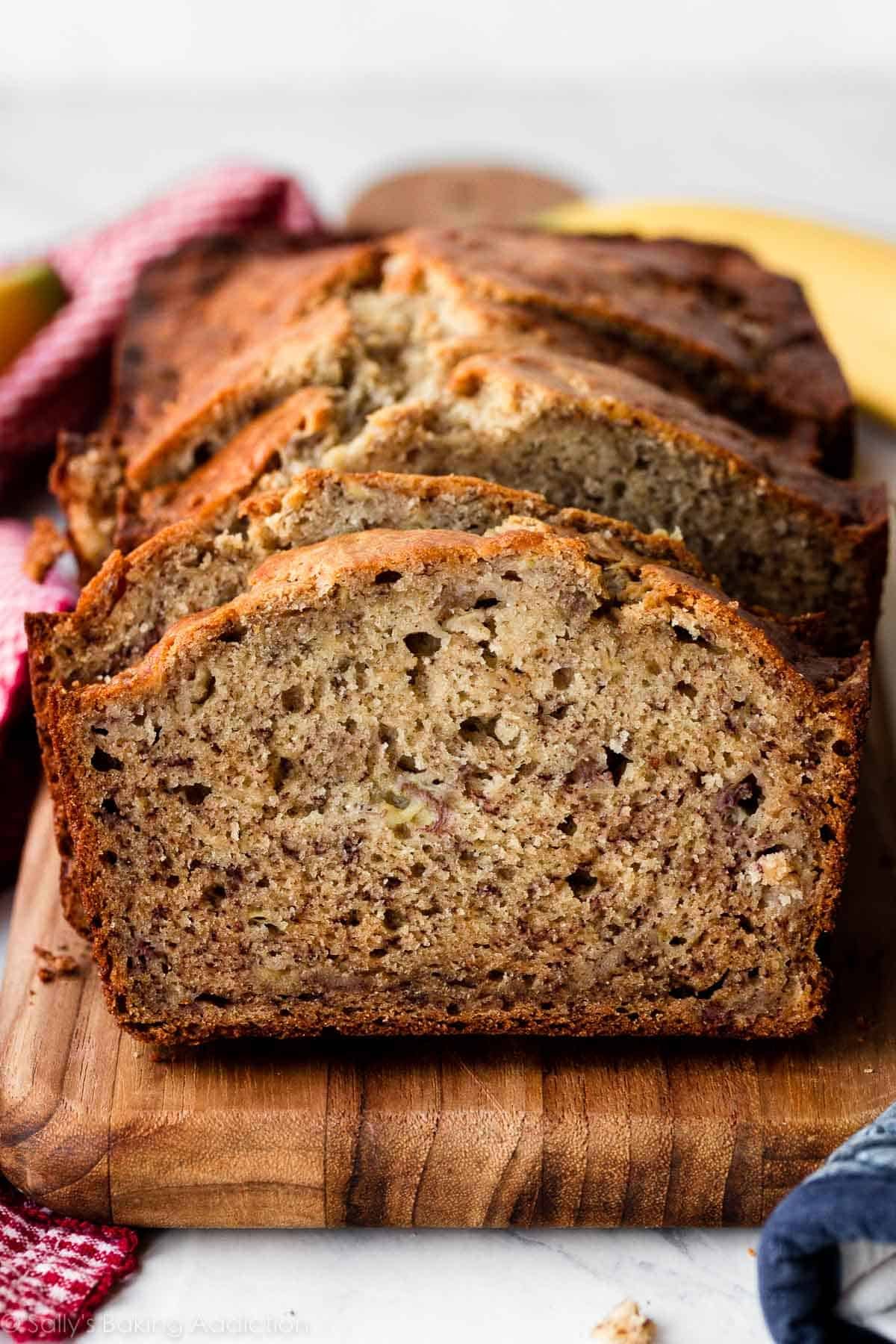Baking sheets and pans are essential tools in any kitchen for baking a variety of dishes. They provide a flat surface for even heat distribution and prevent food from sticking.
In addition to their functionality, these tools come in various sizes and materials to suit different baking needs and preferences. From non-stick options to those made with stainless steel or aluminum, there is a baking sheet or pan for every recipe.
Whether you’re baking cookies, roasting vegetables, or making sheet cakes, having the right baking sheets and pans is crucial for achieving delicious and perfectly cooked results. So, make sure to choose the right ones for your kitchen to enhance your baking experience.
Table of Contents
Types Of Baking Sheets And Pans
When it comes to baking, having the right tools is essential for achieving delicious and perfectly cooked results. Baking sheets and pans are key components of any baker’s arsenal, providing the foundation for all your sweet and savory creations. In this article, we explore the various types of baking sheets and pans available, each with its own unique features and advantages.
1. Aluminum Baking Sheets
Aluminum baking sheets are a popular choice among bakers for their excellent heat conductivity and durability. These sheets offer even baking, ensuring that your cookies, pastries, and other treats are cooked to perfection. The lightweight nature of aluminum also makes it easy to maneuver in and out of the oven, saving you time and effort. Additionally, aluminum baking sheets are rust-resistant and long-lasting, making them a great investment for your baking endeavors.
2. Non-stick Baking Sheets
Non-stick baking sheets are a convenient option for bakers who want to ensure easy release and effortless cleanup. These sheets have a special coating that prevents food from sticking, allowing you to effortlessly remove your baked goods without any residue left behind. Non-stick baking sheets are perfect for delicate treats like cookies and cakes, enabling them to retain their perfect shape and texture. With non-stick baking sheets, you can enjoy baking without the hassle of scrubbing stubborn food remnants.
3. Silicone Baking Mats
Silicone baking mats are a versatile and eco-friendly alternative to traditional baking sheets. These mats are constructed from food-grade silicone, which is heat-resistant and non-toxic. Silicone mats provide excellent heat distribution, ensuring that your baked goods are evenly cooked. They also offer a non-stick surface, allowing for easy removal of your creations. Silicone baking mats are not only suitable for baking but also for roasting vegetables, reheating leftovers, and even as a surface for kneading dough. Their reusable nature makes them an environmentally friendly choice while also saving you money on disposable parchment paper.
4. Glass Baking Pans
Glass baking pans are known for their ability to conduct heat evenly, resulting in deliciously golden crusts and perfectly cooked centers. These pans are a staple in many kitchens, as they are safe for use in the oven, microwave, and even the freezer. Glass pans also offer the advantage of being transparent, allowing you to monitor the browning of your baked goods without opening the oven and disturbing the baking process. Whether you’re baking casseroles, bread, or lasagna, glass baking pans are a versatile and durable choice.
5. Stainless Steel Baking Sheets
Stainless steel baking sheets are renowned for their durability and excellent heat retention. These sheets provide consistent heat distribution, ensuring that your baked goods are cooked to perfection. Stainless steel baking sheets are also resistant to rust and corrosion, making them a long-lasting option for your kitchen. With their sleek and modern appearance, stainless steel baking sheets are not only functional but also a stylish addition to any baker’s kitchen.
Now that you know about different types of baking sheets and pans available, you can choose the ones that best suit your needs and elevate your baking game. Whether you’re a seasoned baker or just starting, having the right tools will make all the difference in creating delicious and beautifully baked treats.
Choosing The Right Baking Sheets And Pans
When it comes to baking, having the right baking sheets and pans can make a world of difference in achieving the perfect results. Whether you are a professional baker or a home cook, choosing the right baking sheets and pans is essential for ensuring even heat distribution, durability, and ease of cleaning. In this article, we will explore the factors to consider when selecting baking sheets and pans that will meet your baking needs.
Consider The Intended Use
One of the key factors to consider when choosing baking sheets and pans is their intended use. Different recipes and baking techniques require different types of bakeware. Are you planning on baking cookies, cakes, or bread? Do you need a sheet pan for roasting vegetables or a muffin tin for baking cupcakes? Understanding your baking needs will help you determine the right size, shape, and depth of the baking sheet or pan that will best suit your requirements.
Evaluate The Material’s Heat Conductivity
Heat conductivity plays a crucial role in the baking process. The material of the baking sheet or pan affects how it distributes heat, which, in turn, affects the browning and texture of your baked goods. Materials like aluminum and stainless steel have excellent heat conductivity, ensuring even baking and preventing hot spots. On the other hand, glass and ceramic pans may take longer to heat up but distribute heat evenly once they reach the desired temperature. Consider the type of baking you frequently do and choose a material that aligns with your desired results.
Assess The Durability And Longevity
Investing in durable baking sheets and pans can save you money in the long run. Look for bakeware that is made from high-quality materials and has a sturdy construction. A well-built baking sheet or pan will not warp, bend, or corrode over time. Additionally, consider the coating on the surface of the bakeware. Non-stick coatings, such as silicone or ceramic, can make for easy release of baked goods and effortless cleaning. Taking these factors into account will ensure that your baking sheets and pans will last for years to come, providing reliable performance and maintaining their functionality.
Examine The Ease Of Cleaning And Maintenance
No one wants to spend hours scrubbing off stuck-on residue from their bakeware. When choosing baking sheets and pans, consider their ease of cleaning and maintenance. Non-stick coatings or pans made from materials like silicone or stainless steel are generally easier to clean, as they resist staining and are dishwasher-safe. Additionally, some bakeware may have removable parts or be stackable, making them more convenient and space-saving. Prioritizing easy cleaning and maintenance will make your baking experience more enjoyable and hassle-free.
In conclusion, when selecting baking sheets and pans, it is crucial to consider the intended use, evaluate the material’s heat conductivity, assess the durability and longevity, and examine the ease of cleaning and maintenance. By keeping these factors in mind, you can ensure that you have the right tools to achieve baking perfection every time. So, go ahead and choose the baking sheets and pans that will elevate your baking game to the next level.
Tips For Properly Using Baking Sheets And Pans
Tips for Properly Using Baking Sheets And Pans
When it comes to achieving perfect baked goods, using the right baking sheets and pans is crucial. But it doesn’t stop there. Properly using these baking essentials can make all the difference in the outcome of your recipes. To help you achieve baking success, we’ve put together some essential tips to follow when using baking sheets and pans.
Preheating The Baking Sheet Or Pan
Preheating your baking sheet or pan before adding your ingredients is an important step to ensure even baking. Most recipes call for preheating the oven, but don’t forget that the baking sheet or pan should also be preheated. This helps to ensure that your baked goods cook evenly and achieve that perfect golden brown color.
Using Parchment Paper Or Silicone Mats For Easy Release
No one wants their baked goods to stick to the pan, leaving a mess and causing frustration. For easy release, consider using parchment paper or silicone mats. These non-stick surfaces provide a barrier between your baked goods and the pan, preventing them from sticking and making cleanup a breeze. Simply line your baking sheet or pan with parchment paper or a silicone mat, and your treats will effortlessly slide right off.
Properly Greasing The Pan To Prevent Sticking
If you prefer not to use parchment paper or silicone mats, another option is to grease your baking sheet or pan properly. This prevents your baked goods from sticking and ensures easy removal. Use a cooking spray, butter, or oil to lightly coat the surface of the pan before adding your batter or dough. Be sure to evenly distribute the grease, paying extra attention to the corners and edges.
Placing The Baking Sheet Or Pan In The Center Of The Oven For Even Baking
When it comes to baking, oven placement matters. To achieve even baking, it’s important to place your baking sheet or pan in the center of the oven. This allows the heat to circulate evenly around your treats, ensuring that they bake uniformly. Avoid placing your pan too close to the top or bottom of the oven, as this can result in uneven browning or undercooked centers.
By following these simple tips for properly using baking sheets and pans, you’ll set yourself up for baking success every time. Whether you’re baking cookies, bread, or pastries, these tips will help you achieve mouthwatering results that are sure to impress.
:max_bytes(150000):strip_icc()/Made-In-Sheet-Pan-5-2000-547c45d6fe3f4698bac3c172f7c25a6d.jpg)
Credit: www.allrecipes.com
Common Mistakes To Avoid With Baking Sheets And Pans
Using the right baking sheets and pans is crucial for achieving the perfect baked goods. However, even with the best equipment, you can still make mistakes that affect the outcome of your baked creations. In this article, we will discuss some common mistakes to avoid with baking sheets and pans, including using metal utensils on non-stick pans, overcrowding the baking sheet or pan, neglecting to properly season cast iron pans, and placing hot pans directly on a countertop.
Using Metal Utensils On Non-stick Pans
When it comes to non-stick pans, using metal utensils can be a big no-no. Metal utensils, such as knives or whisks, can scratch the surface of the non-stick coating, causing it to deteriorate over time. This can lead to your food sticking to the pan and make it difficult to clean. To avoid this, be sure to use wooden, silicone, or plastic utensils that are gentle on the non-stick surface.
Overcrowding The Baking Sheet Or Pan
Overcrowding your baking sheet or pan can lead to uneven cooking and result in baked goods that are either undercooked or overcooked. When you place too many items on a baking sheet or pan, the air circulation is restricted, causing the heat to be distributed unevenly. This can result in some portions of your baked goods being burnt while others are still raw. To achieve even cooking, leave enough space between the items so that the hot air can circulate effectively.
Neglecting To Properly Season Cast Iron Pans
Cast iron pans are known for their durability and excellent heat retention properties. However, they require special care to maintain their non-stick surface. One common mistake is neglecting to properly season your cast iron pans. Seasoning involves coating the pan with a thin layer of oil and heating it to create a barrier that prevents the food from sticking. If you skip this crucial step, your food may stick to the pan and ruin the cooking process. To season your cast iron pans, first, wash them with warm water and mild soap, then dry them thoroughly. Apply a thin layer of oil, such as vegetable oil or shortening, to the entire surface of the pan, including the handle. Place the pan upside down in your oven and bake it at a high temperature for an hour. This process is essential to maintain the non-stick properties of your cast iron pans.
Placing Hot Pans Directly On A Countertop
After removing your pans from the oven, it can be tempting to place them directly on your countertop. However, this can damage both your pans and the countertop. Placing hot pans on a cool surface can cause thermal shock, which can result in warping or cracking of your pans. Additionally, it can leave burn marks or damage the countertop surface. To protect your pans and countertops, always use heat-resistant trivets or cooling racks to rest your hot pans on. This way, you can prevent any potential damage and ensure the longevity of both your pans and countertops.
By avoiding these common mistakes, you can ensure that your baking sheets and pans are used correctly and that your baked goods turn out just the way you want them – delicious and perfectly cooked!
Care And Maintenance Of Baking Sheets And Pans
Baking sheets and pans are essential tools in any kitchen, helping us create tantalizing dishes and mouthwatering treats. To ensure these kitchen workhorses continue to serve us well, proper care and maintenance are crucial. In this section, we will explore some valuable tips and techniques for cleaning, removing stubborn stains and burnt-on residue, storing to prevent damage, and replacing worn-out or damaged baking sheets and pans. Let’s dive into the world of baking sheet and pan maintenance!
Cleaning Tips For Different Materials
Whether your baking sheets and pans are made of aluminum, stainless steel, or non-stick materials, proper cleaning is essential for their longevity and performance.
Consider the following cleaning tips for different materials:
- Aluminum: Start by soaking the baking sheet or pan in warm, soapy water to loosen any food residue. Scrub gently with a non-abrasive sponge or brush to avoid scratching the surface. For tougher stains, create a paste of baking soda and water, apply it to the stains, and let it sit for a few minutes before scrubbing. Rinse thoroughly and dry with a clean cloth.
- Stainless Steel: Similar to aluminum, begin by soaking the baking sheet or pan in warm, soapy water. Use a non-abrasive scrubber or sponge to remove any baked-on food. For stubborn stains, mix equal parts vinegar and water, and apply it to the affected area. Let it sit for a few minutes before scrubbing. Rinse well and dry with a clean cloth to prevent water spots.
- Non-stick: Cleaning non-stick baking sheets or pans requires special care to avoid damaging the non-stick coating. Avoid using abrasive materials that can scratch the surface. Instead, gently scrub with a soft sponge or cloth and mild dish soap. For stubborn residue, create a paste of baking soda and water, apply it to the stains, and let it sit for a few minutes before wiping away. Rinse thoroughly and dry with a soft cloth to prevent water spots.
Removing Stubborn Stains And Burnt-on Residue
No matter how careful we are, sometimes baking sheets and pans end up with stubborn stains or burnt-on residue. Fortunately, there are effective methods for tackling these challenges.
Try the following techniques to remove stubborn stains and burnt-on residue:
- Baking Soda and Vinegar: Create a mixture of equal parts baking soda and vinegar. Apply the mixture to the affected areas and let it sit for a few minutes. Scrub gently with a non-abrasive sponge or brush to lift the stains. Rinse thoroughly and dry.
- Lemon and Salt: Cut a lemon in half and sprinkle salt on the cut side. Rub the lemon directly on the stains or burnt-on residue, applying gentle pressure. The acidity of the lemon combined with the abrasiveness of the salt helps break down the stains. Rinse well and dry.
- Dish Soap and Hot Water: For less stubborn stains, fill the baking sheet or pan with hot water and add a few drops of dish soap. Let it soak for a few minutes before scrubbing with a non-abrasive sponge or brush. Rinse thoroughly and dry.
Storing Baking Sheets And Pans To Prevent Damage
Proper storage is vital to prevent damage and maintain the quality of your baking sheets and pans. Consider the following tips to ensure their longevity:
- Stacking: Avoid stacking multiple baking sheets and pans together, as this can lead to scratches and dents. If you must stack them due to limited space, place a soft cloth or silicone baking mat between each to provide a protective barrier.
- Hanging: If you have sufficient wall or cabinet space, consider hanging your baking sheets and pans. This not only saves space but also prevents any potential damage caused by stacking or jostling.
- Dividers or Racks: Utilize dividers or racks specifically designed for organizing baking sheets and pans. These accessories create compartments, preventing them from touching one another and reducing the risk of damage.
Replacing Worn-out Or Damaged Baking Sheets And Pans
Over time, baking sheets and pans may show signs of wear and tear, such as warping, peeling non-stick coating, or significant scratches. It’s important to replace them to ensure optimal baking results and food safety.
Consider the following indicators for replacing your baking sheets and pans:
- Warped or Bent: If your baking sheet or pan is no longer flat and even, it may not distribute heat evenly, resulting in inconsistent baking.
- Non-Stick Coating: If the non-stick coating is peeling or scratched, it’s time for a replacement. Consuming food from a damaged non-stick surface can be harmful to your health.
- Significant Scratches: Deep scratches can harbor bacteria and make it challenging to clean the surface effectively. Replace your baking sheet or pan if it has significant scratches.
Frequently Asked Questions For Baking Sheets And Pans
What Are Baking Sheets And Pans Used For?
Baking sheets and pans are essential tools in baking. They provide a flat surface for even heat distribution, ensuring your baked goods come out perfectly. Baking sheets are ideal for cookies and pastry, while pans are used for cakes and bread.
What Is The Difference Between Baking Sheets And Pans?
The main difference between baking sheets and pans lies in their sides. Baking sheets have low, slightly raised sides, making them ideal for cookies and other flat baked goods. Pans, on the other hand, have higher sides and are used for baking cakes and bread that need to rise.
Are Baking Sheets And Pans The Same As Cookie Sheets?
Yes, baking sheets are also known as cookie sheets. They are flat, rectangular metal sheets with low sides. While they are commonly used for baking cookies, they can also be used for other baked goods like pastries and rolls. The terms baking sheets and cookie sheets can be used interchangeably.
Conclusion
To recap, choosing the right baking sheets and pans is essential for achieving delicious and evenly baked treats. The material and size of these kitchen essentials play a crucial role in the final result. Consider investing in high-quality options that are durable and provide excellent heat distribution.
Additionally, proper maintenance and storage will extend their lifespan. With the right tools, your baking adventures will be a breeze! Happy baking!
